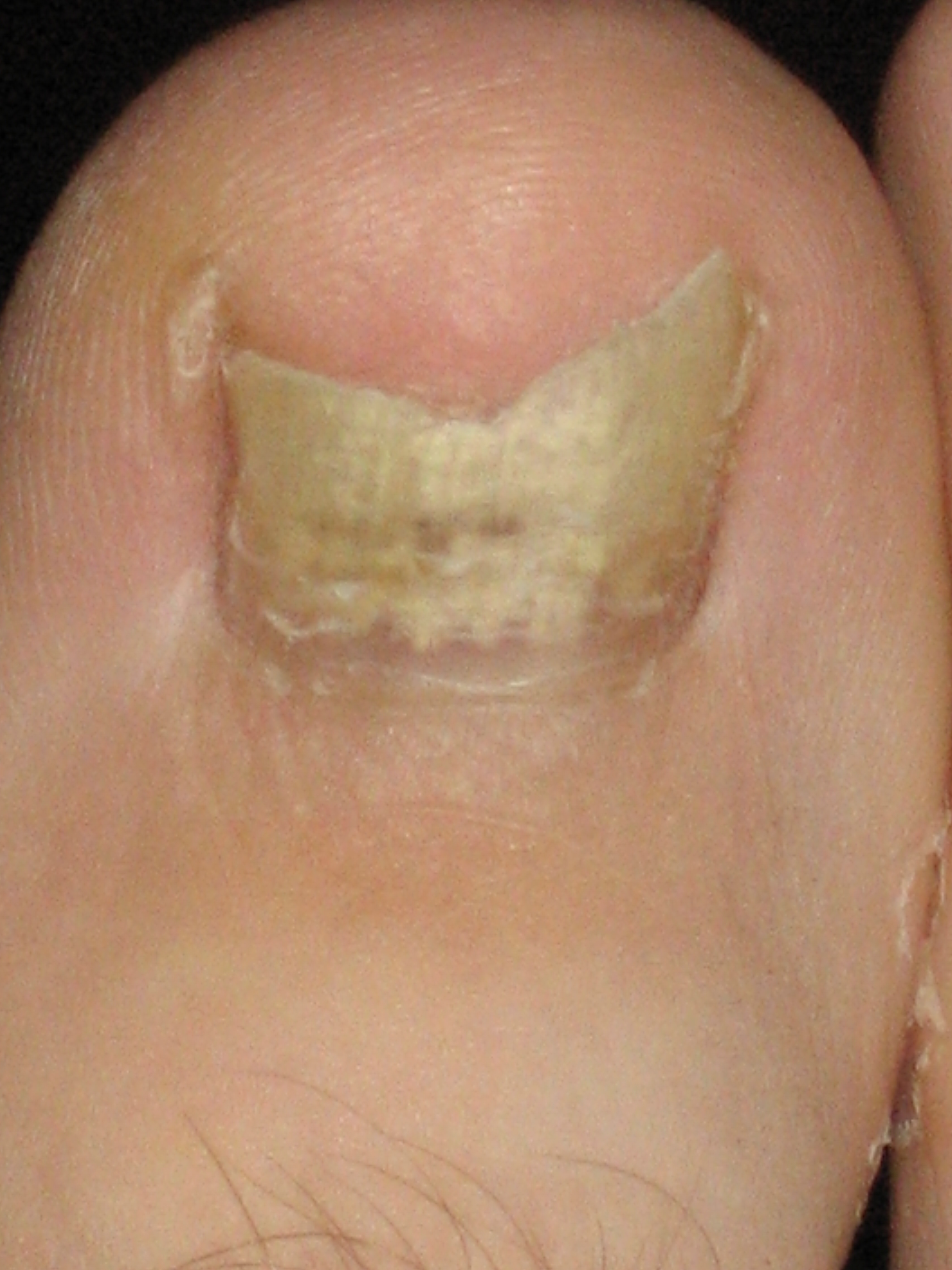|
Onychocola Canadensis
''Onychocola canadensis'' is a relative of the dermatophyte and an occasionally causes onychomycosis Onychomycosis, also known as tinea unguium, is a fungal infection of the nail. Symptoms may include white or yellow nail discoloration, thickening of the nail, and separation of the nail from the nail bed. Toenails or fingernails may be affected .... It was described in 1990 from 3 clinical reports in Canada. Morphology and ecology It belongs to the Family Gymnoascaceae, the colonies usually have a yellowish-white or pale grey colour, and grows slowly. In the aerial mycelium, arthroconidia are formed and the shape of cells will turn from cylindrical to round. Arthroconidia are usually single celled or two celled, range from 4-17 μm in length. Studies suggest its originated from soil because the infected patients are mostly farmers. Epidemiology ''Onychocola canadensis'' has been reported in several clinical reports as an agent of toenail infection, mostly in temperate a ... [...More Info...] [...Related Items...] OR: [Wikipedia] [Google] [Baidu] |
Dermatophyte
Dermatophyte (from Greek '' derma'' "skin" (GEN ''dermatos'') and ''phyton'' "plant") is a common label for a group of fungus of ''Arthrodermataceae'' that commonly causes skin disease in animals and humans. Traditionally, these anamorphic (asexual or imperfect fungi) mold genera are: ''Microsporum'', ''Epidermophyton'' and ''Trichophyton''. There are about 40 species in these three genera. Species capable of reproducing sexually belong in the teleomorphic genus Arthroderma, of the Ascomycota (see Teleomorph, anamorph and holomorph for more information on this type of fungal life cycle). As of 2019 a total of nine genera are identified and new phylogenetic taxonomy has been proposed. Dermatophytes cause infections of the skin, hair, and nails, obtaining nutrients from keratinized material. The organisms colonize the keratin tissues causing inflammation as the host responds to metabolic byproducts. Colonies of dermatophytes are usually restricted to the nonliving cornified laye ... [...More Info...] [...Related Items...] OR: [Wikipedia] [Google] [Baidu] |
Onychomycosis
Onychomycosis, also known as tinea unguium, is a fungal infection of the nail. Symptoms may include white or yellow nail discoloration, thickening of the nail, and separation of the nail from the nail bed. Toenails or fingernails may be affected, but it is more common for toenails. Complications may include cellulitis of the lower leg. A number of different types of fungus can cause onychomycosis, including dermatophytes and ''Fusarium''. Risk factors include athlete's foot, other nail diseases, exposure to someone with the condition, peripheral vascular disease, and poor immune function. The diagnosis is generally suspected based on the appearance and confirmed by laboratory testing. Onychomycosis does not necessarily require treatment. The antifungal medication terbinafine taken by mouth appears to be the most effective but is associated with liver problems. Trimming the affected nails when on treatment also appears useful. There is a ciclopirox-containing nail polish, but t ... [...More Info...] [...Related Items...] OR: [Wikipedia] [Google] [Baidu] |
Onygenales
The Onygenales are an order of fungi in the class Eurotiomycetes and division Ascomycota. The order's last common ancestor is estimated to have lived 150 million years ago. Onygenales can consume and break down keratin, the main component of the outer layer of skin. They are primarily found on animals, droppings, and areas frequented by animals. Many are dimorphic, and can change from mold to yeast form depending on their environment. Many onygenalean fungi are pathogens. One species, ''Trichophyton rubrum'', is the primary cause of athlete's foot. This order also includes Coccidioides implicated in Valley fever. The Onygenales are important as emerging human pathogens because of the rising rates of immunosuppression due to live-organ transplant, HIV/AIDS, and autoimmune disorders such as lupus erythematosus Lupus erythematosus is a collection of autoimmune diseases in which the human immune system becomes hyperactive and attacks healthy tissues. Symptoms of these disease ... [...More Info...] [...Related Items...] OR: [Wikipedia] [Google] [Baidu] |

